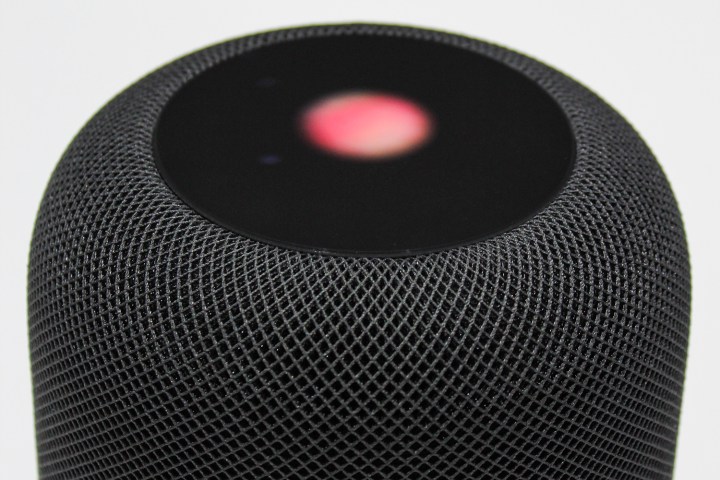
One tip you might not find, however, is an extremely important one — that is, not to break your HomePod. As it turns out, it will cost $279 to repair your smart speaker if it is out of warranty. If you’re trying to mail it in for a fix, you have to hand over an additional $20. That means that for $50 more, you could just … buy a whole new HomePod. Luckily, if the only damage to your HomePod is the power cable, you only have to pay $29 to replace that particular part.
That aside, according to Digital Trends’ recent review of the HomePod, setup is, as you expect with Apple kit, “dead simple,” involving little more than holding your iPhone close to the speaker and following a few prompts on the display.
But if you get in a pickle from the start, Apple’s new user guide will set you straight.
It’s split into various sections, including: Get started, Apple Music, Apple Podcasts, News, Control your home, Assistant, and Support and safety. Most have sub-sections where you can find out more about the HomePod’s various features and discover ways to get the most out of it.
News junkies, for example, can quickly receive updates from major sources around the world simply by saying, “Hey Siri, what’s the news today.” If you want to switch to another source, you can say, “Hey Siri, switch to the BBC instead,” or whatever outlet you prefer. Of course, you can also ask for specific types of content by asking Siri for “sports news” or “business news,” and so on.
But of course, as the guide’s different sections suggest, the HomePod does a whole lot more than just respond to your requests.
Brilliant sound but pricey
In DT’s review, the $349 HomePod was warmly received, praised for its “gorgeous design, brilliant sound, simple setup, and effortless control of HomeKit devices.”
Downsides, however, include lack of multi-user support and the inability to use Siri for third-party music streaming services. We should also point out that the HomePod has no regular Bluetooth support, and that you need an Apple device that runs iOS 11 in order to set up the device at all. That means that unless you’re an Apple junkie who has outfitted your entire life with devices from Apple, this speaker may be difficult to use.
It’s also one of the more expensive smart speakers on the market, and more expensive than similar offerings from major rivals, including Amazon’s new Echo ($99), and Google Home ($129), though Google Home Max is pricier at $399.
If you’re getting interested in smart speakers but have yet to take the plunge, be sure to check out DT’s recent piece comparing offerings from the three leading players in the space. As you might expect, we discovered that each of the devices has strengths and weaknesses, though depending on your needs, some will matter more than others.
Updated on February 12: The HomePod will cost at least $279 to fix.


